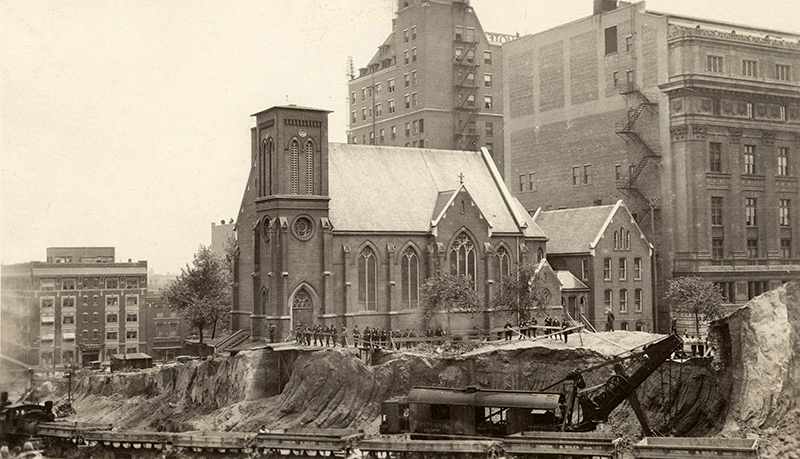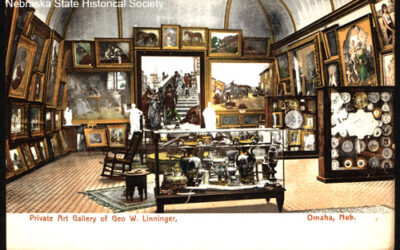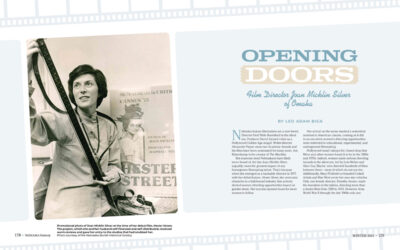
History Nebraska RG2281-82
By David L. Bristow, Editor
Omaha’s St. Mary Magdalene Church has the distinction of being built in reverse order. Its upper level, shown here in May 1920, was completed in 1903. Its lower level was added after road grading lowered Dodge Street by twenty feet. The former ground floor was then reconfigured as a balcony.
German immigrants founded the parish in 1868. The first St. Mary Magdalene Church, known informally as the German Catholic Church, stood near Sixteenth and Douglas. The current building stands on the southeast corner of Nineteenth and Dodge.
Downtown Omaha’s east-west streets used to have a steeper grade than they do now. The hills were lowered in a series of projects starting in the 1880s. Houses could be lowered to the new ground level, but larger buildings required a different approach. The old county courthouse on Farnam Street, for example, was left atop its own pyramid of land, accessible only by long stairways on every side until it was replaced by the current courthouse in 1912.
The Dodge Street project involved the excavation of 350,000 cubic yards of dirt. The area shown here isn’t even the deepest part of the cut. A block to the west, Dodge lay thirty-six feet below its 1880 elevation.
Today St. Mary Magdalene Church is listed on the National Register of Historic Places, an architectural testimony to one of Omaha’s most ambitious engineering projects.
More photos of the lowering of Dodge Street in April and May 1920:



(Posted January 26, 2022)



